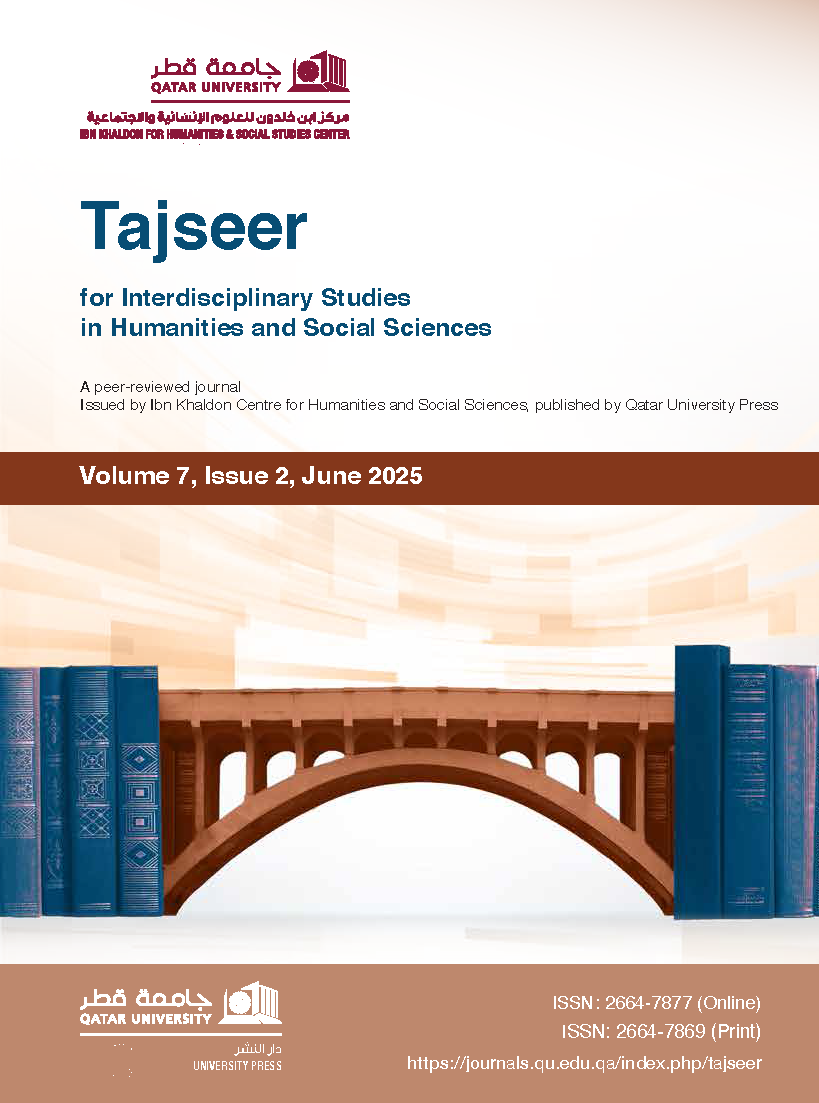A Conceptual Approach to Bridging the Relationship Between Computational Intelligence & The Social Sciences: An Applied Computational Model
Abstract
Text Network Analysis (TNA) serves as a potent tool for dissecting various forms of textual e-content, offering profound insights into their underlying structures. In this study, we illuminate the potential of harnessing computational intelligence within the realm of social sciences by applying Text Network Analysis to a seminal work in the sociology of knowledge. Authored by two scholars, this work delves into the intricate interplay between reality, society, and knowledge.
Our utilization of computational intelligence tools has proven adept at discerning the epistemic phrases and concepts embedded within the text, unraveling the intricate tapestry of the authors' discourse and revealing a rich tapestry of social and epistemic concepts. The computational approach yielded a reading coefficient of 16.943, indicative of the material's challenging nature. Furthermore, an analysis of the book's content highlighted the prominence of key terms: Reality, Knowledge, Social, Society, and World. To augment our understanding, we visually represented the connections between the book's vocabulary and the meanings inherent in its text. We then delved deeper into the network fabric of three conceptual domains: Social-Reality-Knowledge, Social-Society, and World-Society-Individual. The analysis unveiled the intricate relationships within these concept networks, offering invaluable insights for social science students and researchers, streamlining analysis processes, and saving valuable time. This innovative approach to computationally processing social texts serves as a bridge between the realms of smart computing and social sciences, paving the way for new synergies and expanded horizons at the intersection of these two fields of knowledge.
Metrics
##plugins.themes.bootstrap3.article.details##
Social SciencesComputational IntelligenceText Network AnalysisText VisualizationConcept Networks
Berger, P. & Luckmann, T. The Social Construction of Reality: A Treatise in the Sociology of Knowledge, London: Penguin Books, 4th Ed., 1991.
Borgatti, S. et al., “Network Analysis in the Social Sciences,” Science, Vol. 323, No. 5916 (March 2009), pp. 892-895.
Castro-Schilo, L. “Text Analysis In The Social Sciences A New Spectrum Of Possibilities”, Towards Data Science Journal, Jun 28, 2021, accessed on April, 13th, 2022, at: https://medium.com/data-science/text-analysis-in-the-social-sciences-a-new-spectrum-of-possibilities-33adc44e8a0e
Celardo, L. & Everett, M. “Network Text Analysis: A Two-Way Classification Approach”, International Journal of Information Management, Vol. 51, 102009 (April 2020), pp. 1-8. https://doi.org/10.1016/j.ijinfomgt.2019.09.005
Dmitry Z. Complex Network Analysis in Python, North Carolina: The Pragmatic Bookshelf, 2018.
Ignatow, G. & Mihalcea, R. Text Mining: A Guidebook for the Social Sciences. New York: SAGE Publications, 2017.
Jo, Taeho. Text Mining: Concepts, Implementation, and Big Data Challenge, Gewerbestrasse: Springer, 2019.
Lamba, M. & Madhusudhan, M. “Network Text Analysis”, In: Text Mining for Information Professionals. Switzerland: Springer, 2022.
Macanovic, A. “Text Mining for Social Science - The State and The Future Of Computational Text Analysis In Sociology”, Review Social Science Research, Vol. 108, 102784, (November 2022), pp. 1-17. https://doi.org/10.1016/j.ssresearch.2022.102784
Paranyushkin, Dmitry. “InfraNodus: Generating Insight Using Text Network Analysis,” WWW '19: The World Wide Web Conference, San Francisco: Publication History, 2019, pp. 3584-3589. https://doi.org/10.1145/3308558.3314123
Al-Rizzo, Hasan M. “al-bidaʻ wālmḥdthāt: tnqyb mḥwsb fī jānib min khṭāṭthā al-maʻrifīyah,” (in Arabic), dawrīyah Namāʼ, No 16, (2022), pp. 77-106.
–––. “al-Taḥlīl al-dalālī wa-al-waṣf alrswmy al-muqaddamah Ibn Khaldūn: Muʻālajat mḥwsbh,” (in Arabic), Namāʼ lil-Buḥūth wa-al-Dirāsāt, 16/7 / 2023, accessed on, 18/7 / 2023, at: https://nama-center.com/Articles/Details/41487
–––. “Muʻālajat muḥawsabah li-taḥlīl Shabakah al-maʻānī wa-al-mafāhīm fī kutub taʻbīr al-ruʼyā,” (in Arabic), Namāʼ lil-Buḥūth wa-al-Dirāsāt, 27/2 / 2023, accessed on 5/3 / 2023, at: https://nama-center.com/Articles/Details/41466
Rowlands, K. Understanding Text Structures, Online Resources 5, California: CSU, 2010.
Segev. Elad. “Textual Network Analysis: Detecting Prevailing Themes and Biases in International News and Social Media,” Sociology Compass, Vol. 14, No. 4 (February 2020), pp. 1-14. https://doi.org/10.1111/soc4.12779
–––. (ed.), Semantic Network Analysis in Social Sciences. London: Routledge Francis & Taylor Group, 2022.
******************************************************************
الرزو، حسن مظفر. "البدع والمحدثات: تنقيب محوسب في جانب من خطاطتها المعرفية"، دورية نماء، ع16 (2022)، ص77-106.
–––. "التحليل الدلالي والوصف الرسومي لمقدمة ابن خلدون: معالجة محوسبة"، نماء للبحوث والدراسات، 16/ 7/2023، استُرجع في: 18/7/2023 على الرابط: https://nama-center.com/Articles/Details/41487
–––. "معالجة محوسبة لتحليل شبكة المعاني والمفاهيم في كتب تعبير الرؤيا"، نماء للبحوث والدراسات، 27/2/2023، استُرجع في: 5/3/2023، على الرابط: https://nama-center.com/Articles/Details/41466



 https://orcid.org/0000-0002-8089-2066
https://orcid.org/0000-0002-8089-2066